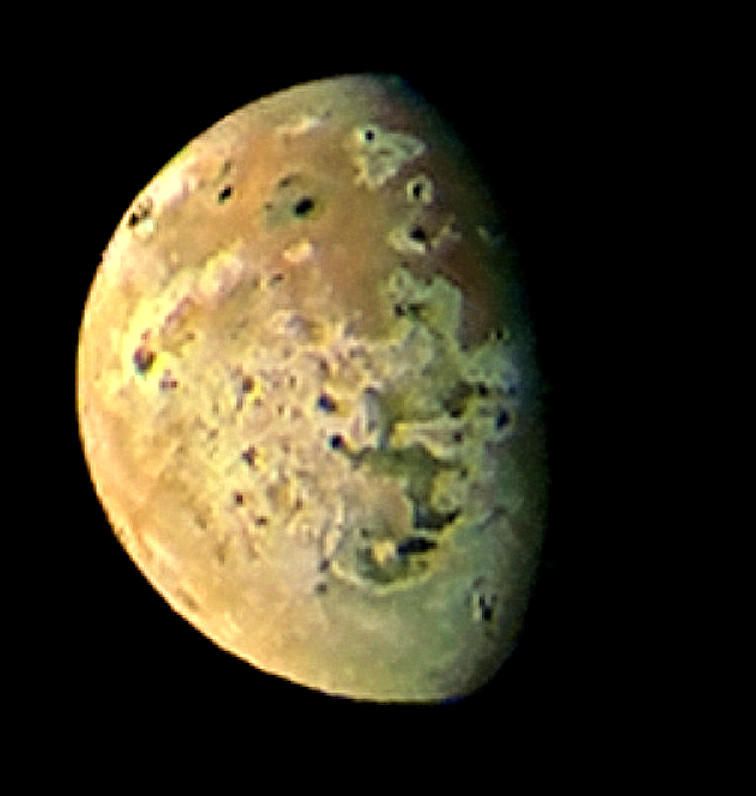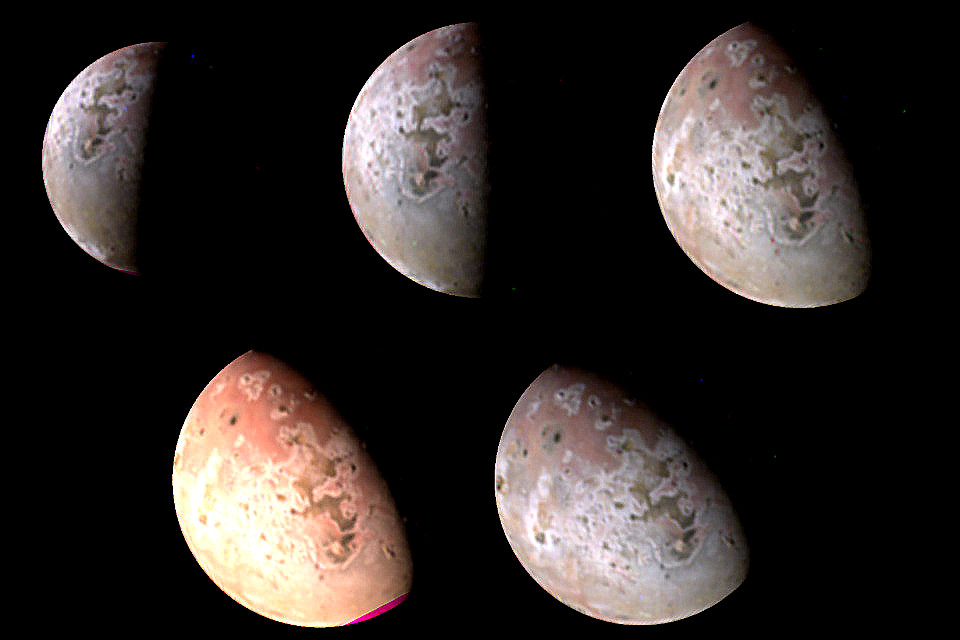Fiery Moon

Jupiter's moon Io (credit: NASA)
Jupiter's fiery moon Io is coming into clearer view.The Juno spacecraft began a series of maneuvers last year allowing the robot to cruise past of the volcanic moon as well as several of the others orbiting the giant gas planet. The first images of a recent Io flyby were just released and showed Io's tortured surface from distances ranging from 40,000 miles to a bit lower view of 32,000 miles off. Another fly-by will happen later this year and images should be from a closer vantage point and even sharper.
According to NASA engineers, Juno's camera (JunoCam) captured multiple new images of the moon. The first appears to show several pronounced volcanic features strangely named Lei-Kung Fluctus, Amaterasu Patera, Dazhbog Patera, Surt & Vivasvant Patera volcanoes, likely for the person who described the feature on Io's surface. The smallest detail visible is about 22 miles wide. A montage of images was also released, when the Juno flew by the moon at about 32,000 miles, allowing the JunoCAM to acquire the five images of Io offering the best view Io's colorful surface to date.

Io montage with surface features (credit: NASA/JunoCam)
Most of the dark spots across the moon's surface are the result of volcanic eruptions. These include East Girru, a feature last seen at this resolution during the New Horizons encounter in 2007. At that time, the volcano was undergoing a major eruption. Another surface change is at Chors Patera, which has undergone significant reddening since the Galileo spacecraft viewed it in 2001. Reddish materials on Io indicate sulfur and are often associated with high-temperature volcanism on Earth. Dark spots near the terminator, the boundary between night and day, are shadows of tall mountains. In the middle of the upper right image may be a mountain that is over 18,000 feet tall.
One Io flyby early in 2024 may pass over the fiery moon at less than 1000 miles above its surface. Imagine what imagery of Io JunoCam will be capture over the next months and years. WHB